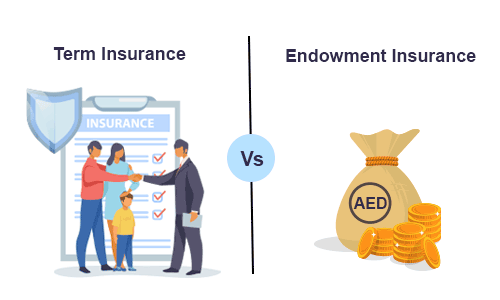Understanding Surrender Value in Insurance
Life insurance is a keystone of a good financial plan, ensuring the financial well-being of loved ones in unforeseen circumstances. Like any significant financial instrument, it comes with its own set of jargon, which you must need to understand thoroughly. One crucial term is "surrender value".
So, what is surrender value in insurance? Simply put, it's the amount that you will receive if you decide to prematurely terminate your policy.
Understanding what surrender value is in life insurance is vital, as it directly impacts the returns on your investment and your financial planning. Just as we wouldn't buy a car without understanding its features, it's equally crucial to grasp what surrender value is in life insurance when making long-term commitments.
Best Term Insurance Plans in UAE
Some of the best Term Insurance quotes in UAE & Dubai are:
Table of Content
This article will delve deep into this essential term to help you make informed decisions about your life insurance policy.
What is Surrender Value in Insurance?
When we talk about insurance, especially life insurance, ‘surrender value’ is a term that often pops up. But what is surrender value in insurance? Let's break it down in simple terms.
Imagine that you've been paying premiums on a life insurance policy for several years, but for some reason, you decide that you no longer want to continue with the policy. Instead of just losing all the money you've paid so far, the insurance company will offer you a sum of money if you decide to surrender or terminate your policy before it matures. This sum of money is called the surrender value.
The surrender value isn't just a random amount — it is typically a portion of the premiums that you've paid into the policy, minus any charges. In the early years of the policy, the surrender value might be low or even zero.
As years pass and you continue paying your premiums, however, this amount generally increases. Note that this value is also influenced by any bonuses that might have been added to your policy.
Types of Surrender Value in Insurance
In insurance, surrendering a policy doesn't always translate to a single fixed value. There are different ways in which the surrender value can be calculated, depending on the terms set by the insurance company.
Broadly, there are two main types of surrender values — Guaranteed Surrender Value and Special Surrender Value.
Let's explore each type in detail:
-
Guaranteed Surrender Value (GSV)
The guaranteed surrender value is precisely what the name suggests, i.e., the guaranteed amount. This is a predefined value that the policyholder is assured of receiving if they decide to surrender the policy after a certain period.
GSV is typically a percentage of the total premiums paid, usually excluding the first-year premium and any extra premium. The exact percentage and terms are often detailed in the policy document.
Example -
Consider Fatima, who has a life insurance policy with an annual premium of AED 4,000. Her policy terms state that she'll get 25% of her total premiums (excluding the first year) as GSV after 5 years.
If she decides to surrender it after a period of 5 years, she'll receive 25% of AED 16,000 (4 years' worth of premiums), which equals AED 4,000.
-
Special Surrender Value (SSV)
Unlike the guaranteed surrender value, the special surrender value isn't a fixed percentage. Instead, it is calculated as per the premiums paid and the duration for which the policy has been active.
Insurance companies use complex formulas, which often consider factors like policy terms, bonuses, and market conditions. As a result, the SSV might vary from one policyholder to another, even if they've paid the same premiums.
Example -
Omar has been paying an annual premium of AED 6,000 for his life insurance plan, which has a tenure of 20 years and a sum assured of AED 120,000. After 7 years, he's considering surrendering his policy.
The insurance company will calculate this amount as per their formula, which takes into account factors like market performance and bonuses earned. The formula is usually this -
SSV = (Paid-up value + bonuses) x surrender value factor
Here, the paid-up value is calculated in the following manner — sum assured x (number of premiums paid/the original number of premiums to be paid throughout the tenure).
In Omar’s case, this will be AED 120,000 x (7/20), i.e. AED 42,000.
For calculations, Omar’s company has set the surrender value factor for surrendering after 7 years as, let’s say, 40%.
Assuming that no bonus is applicable, the SSV will be, thus, 40% of AED 42,000, i.e. AED 16,800.
Which is a Good Option – Surrender or Not to Surrender?
Deciding whether to surrender an insurance policy or continue with it is a crucial decision that requires careful consideration. While circumstances differ for every individual, it's essential to weigh the pros and cons before making a choice.
Advantages of Not Surrendering
- Full Maturity Benefits: By not surrendering and staying with the policy till the end of its term, you receive the full maturity benefit, which is generally higher than any surrender value.
- Continued Life Cover: Insurance isn't just an investment — it's a protective cover for your loved ones. If you decide to continue with your policy, the life cover remains intact, safeguarding your family's future in case of any unfortunate events.
- Bonus Accrual: Several insurance policies offer bonuses that accumulate over the years. By not surrendering, you give your policy the chance to accumulate these bonuses, which can significantly enhance the maturity value.
Advantages of Surrendering
- Immediate Liquidity: If you're in immediate need of cash due to an emergency or another significant financial requirement, surrendering can provide you with quick funds.
- Redirecting Funds: If you find another investment avenue that offers better returns or aligns more with your current financial goals, surrendering the existing policy can free up funds to be invested elsewhere.
- Reduced Financial Burden: If paying the annual or monthly premium becomes a financial strain due to changed circumstances, you can get relief from further financial commitments by surrendering the policy.
Points to Consider
- Loss of Premiums: Especially in the early years, the surrender value might turn out to be considerably less than the total premiums paid.
- Re-entering is Expensive: If you decide later that you want life insurance again, starting a new policy might be more expensive, especially if your health or age makes you a higher risk.
Ultimately, the decision to surrender or not mainly depends on you. It's vital to assess your current financial situation, future goals, and the benefits your policy offers before making a move. Seeking advice from a financial advisor can provide clarity and ensure that your decision aligns with your broader financial strategy.
To Conclude
The world of life insurance offers various instruments to navigate financial safety, with ‘surrender value’ standing out as a critical term. Understanding what is surrender value in insurance, we've seen that it represents a return on your policy if you opt to terminate it before its full term.
Grasping what is surrender value in life insurance can help policyholders make informed choices, whether it's to stick with a policy or seek out alternative financial instruments.
Every policyholder's journey is unique. While the surrender value offers a safety net of sorts, it's paramount to weigh its benefits against potential losses. In understanding what is surrender value in life insurance, you're better equipped to align your insurance choices with your broader financial objectives.
Always remember, the goal of life insurance is not just about returns but also providing a safety net for our loved ones, making it crucial to view these decisions holistically.
More From Term Insurance
- Recents Articles
- Popular Articles







.jpg)


























.png)












